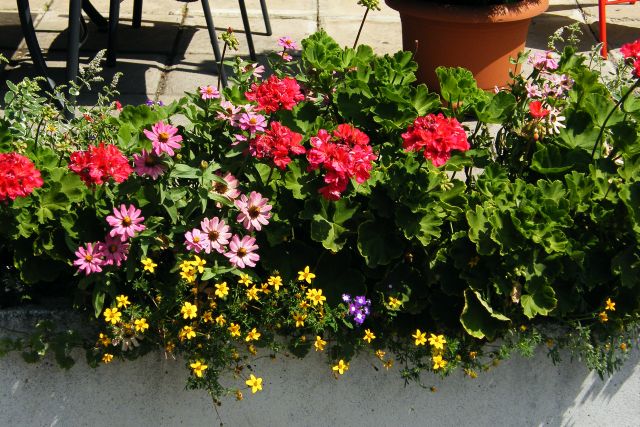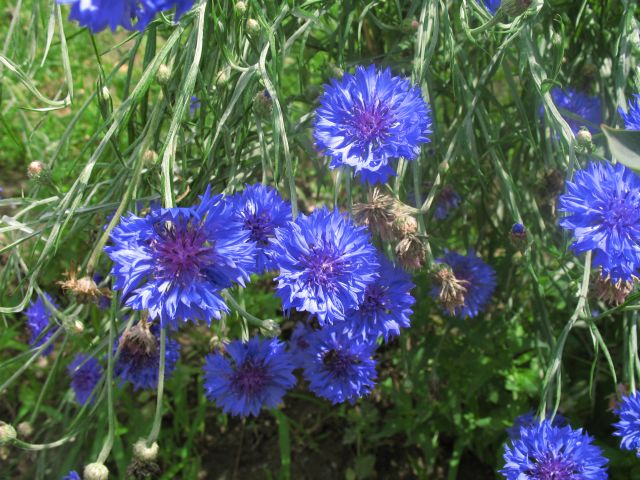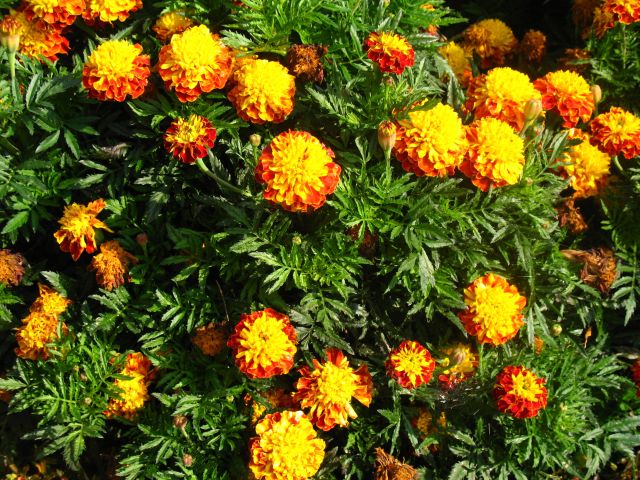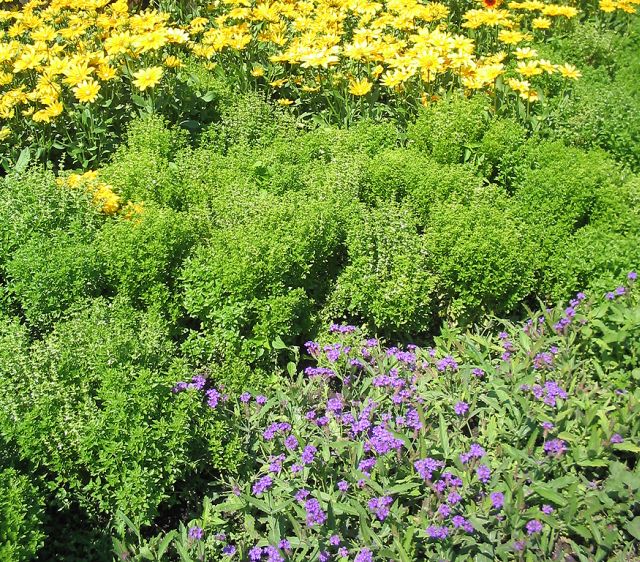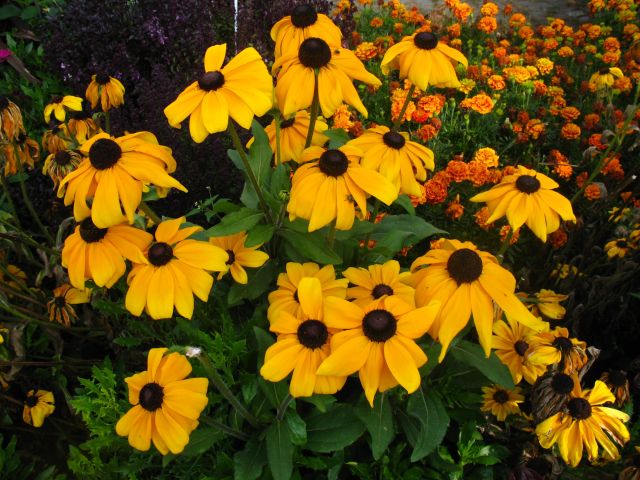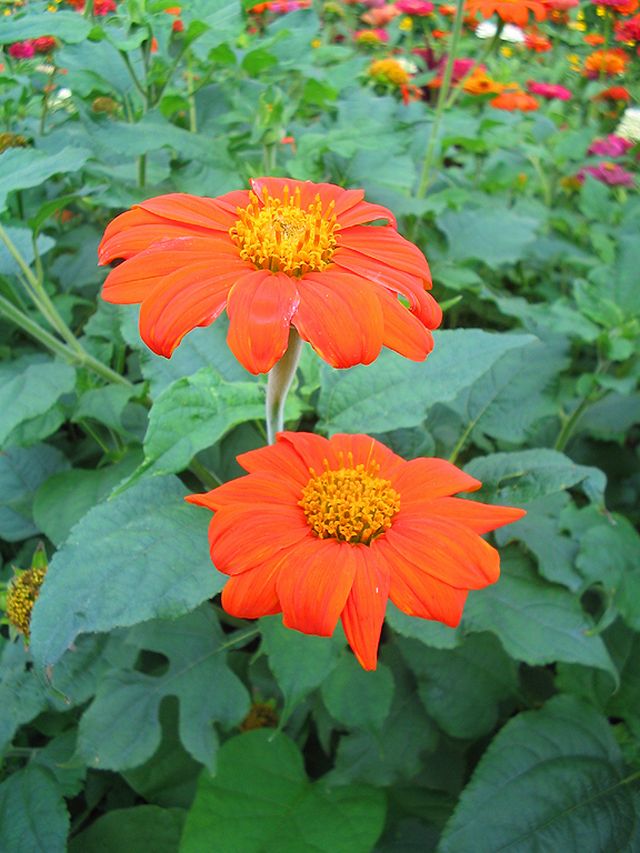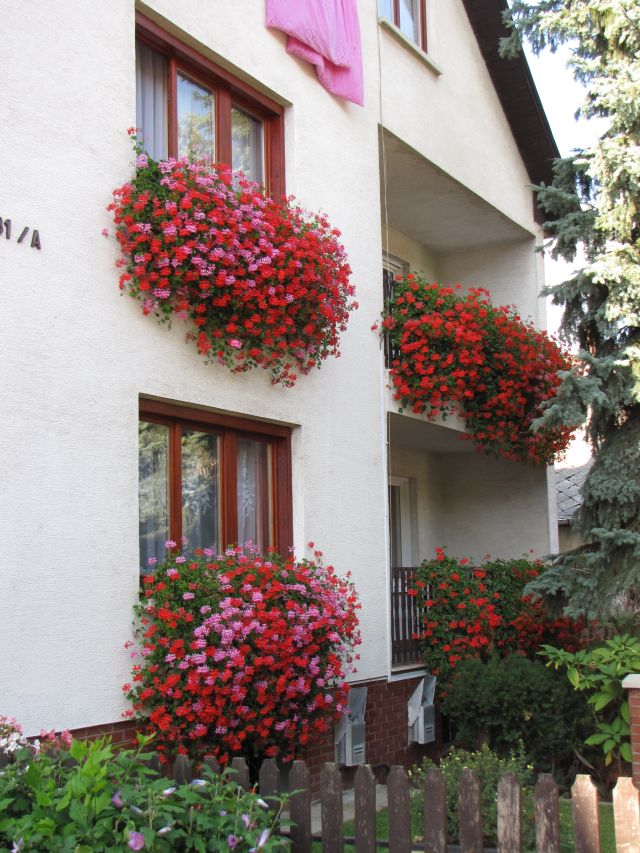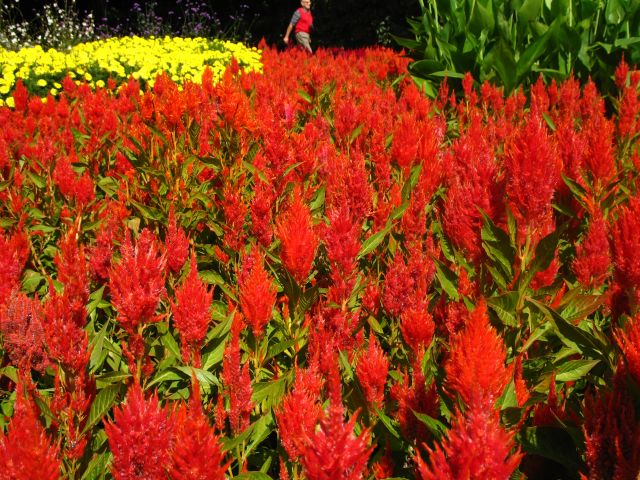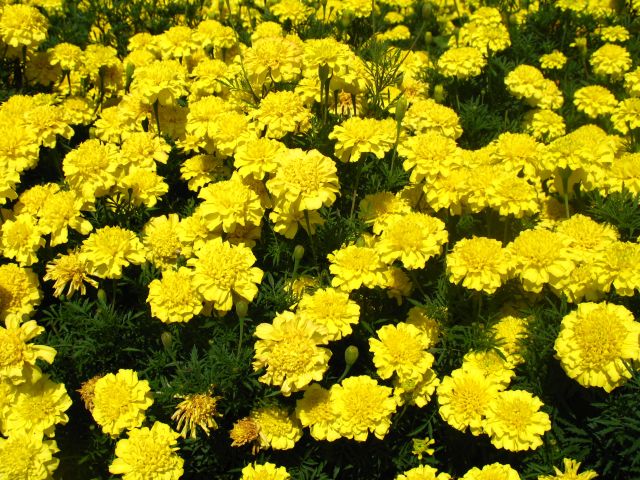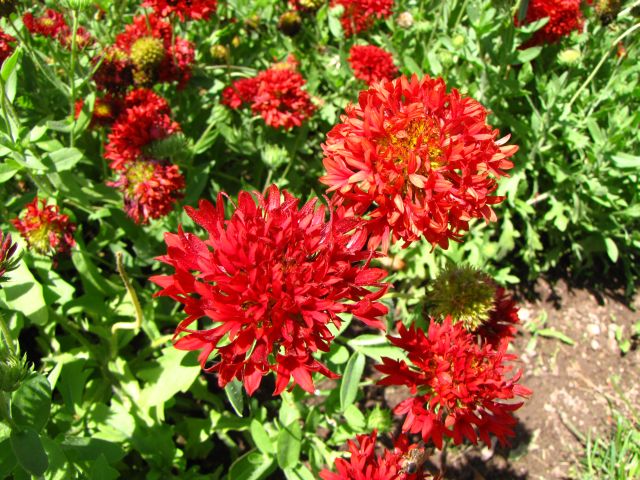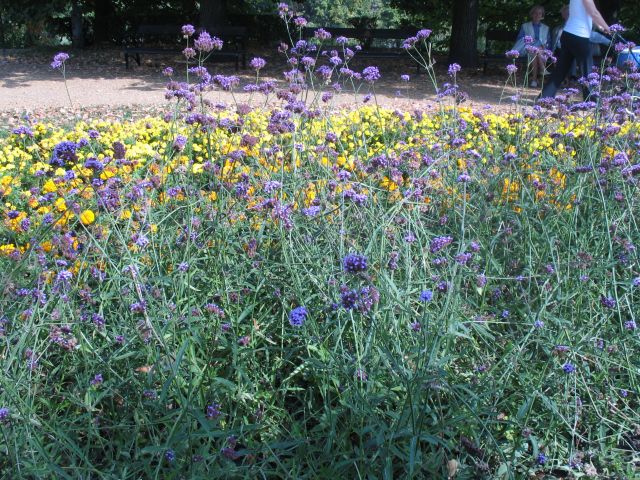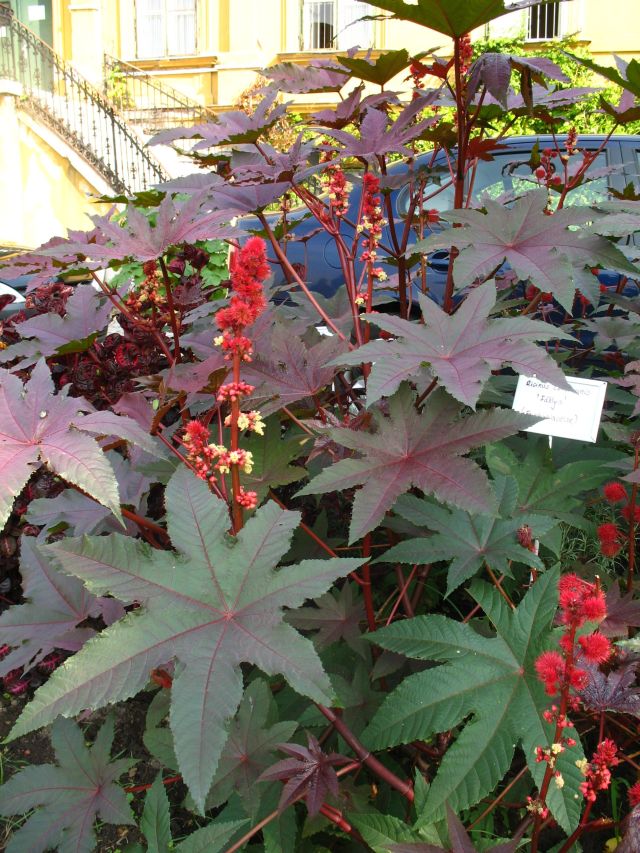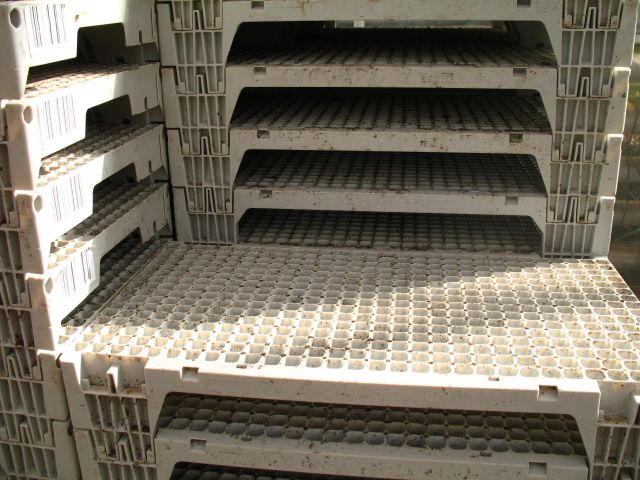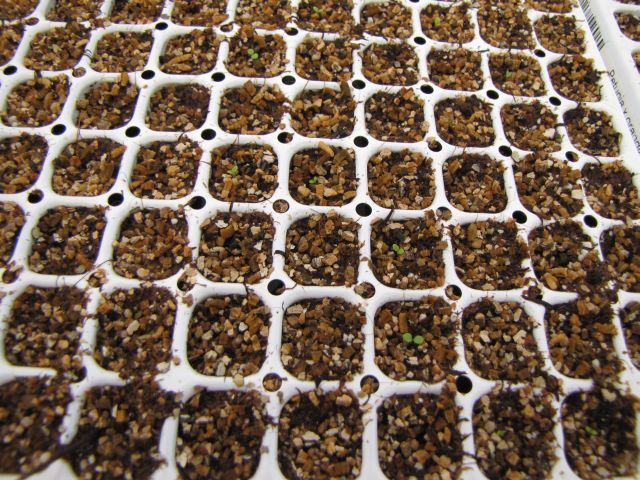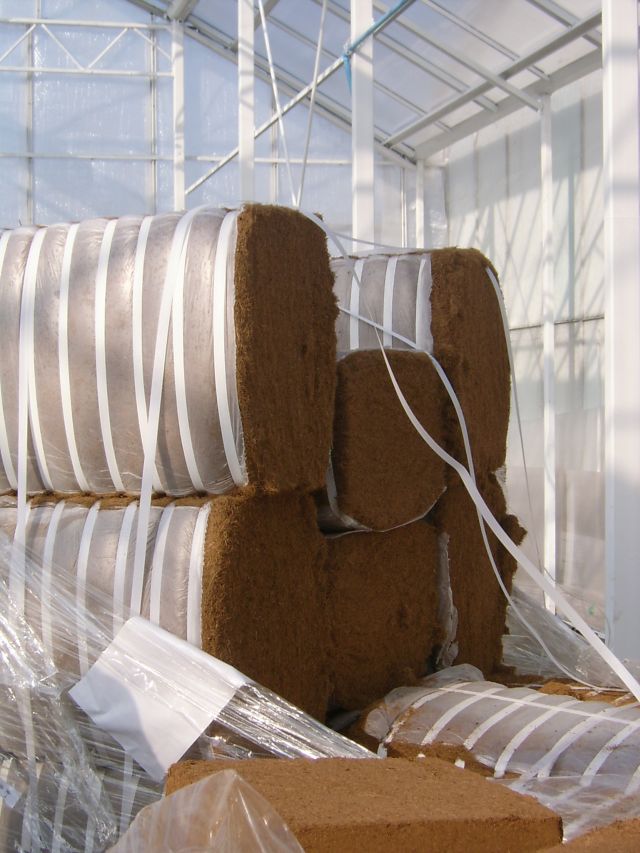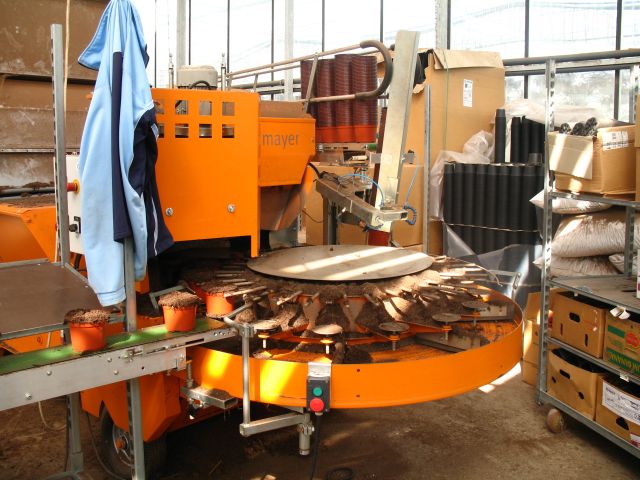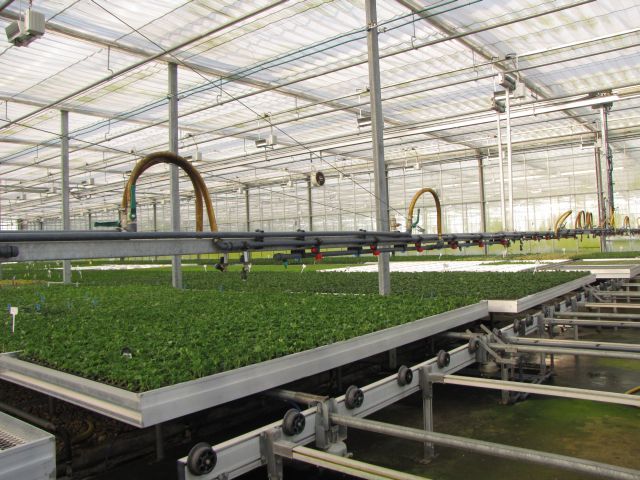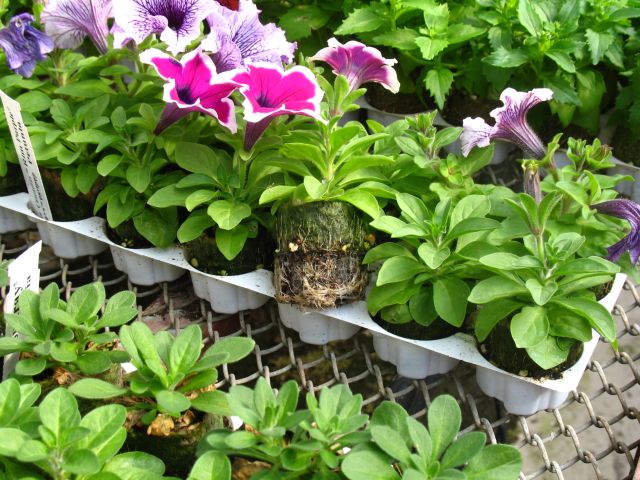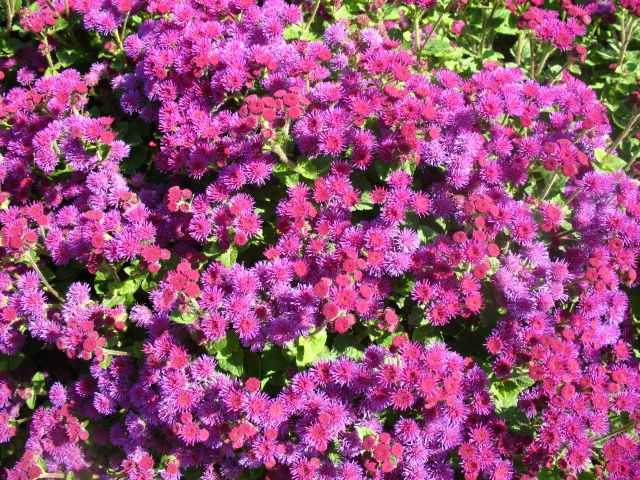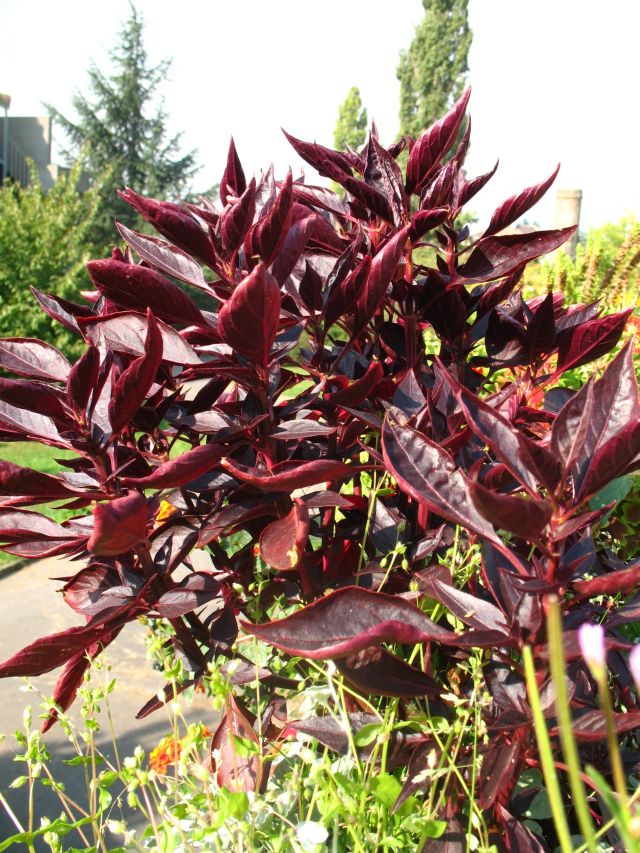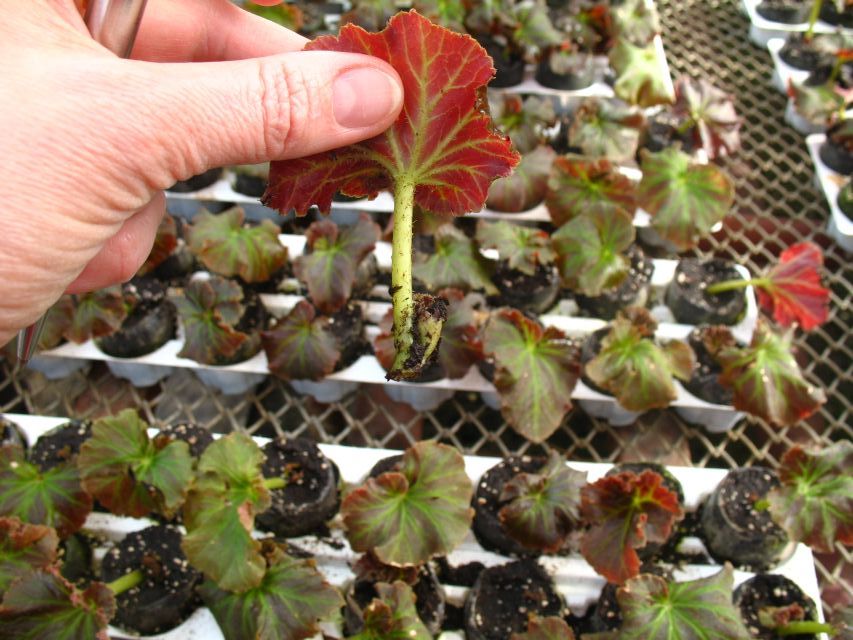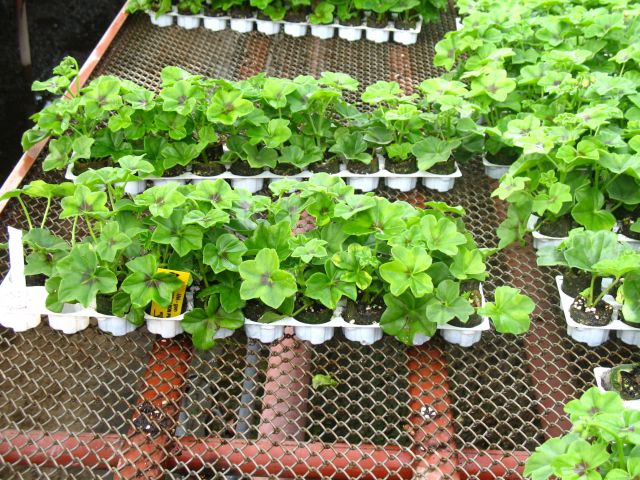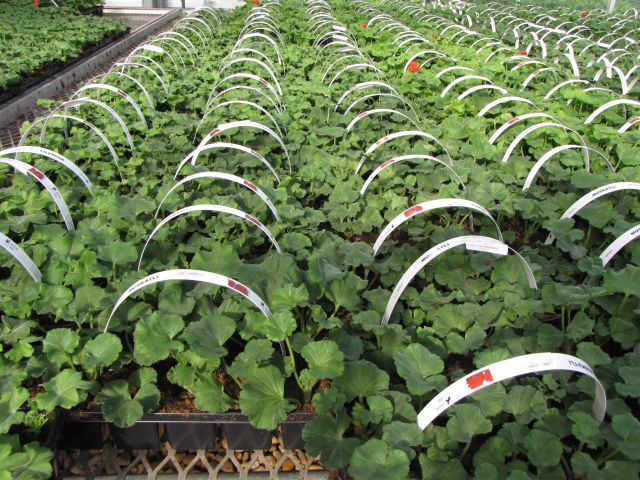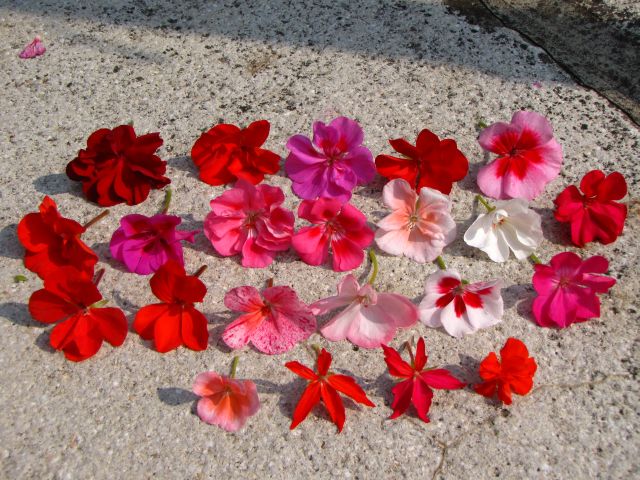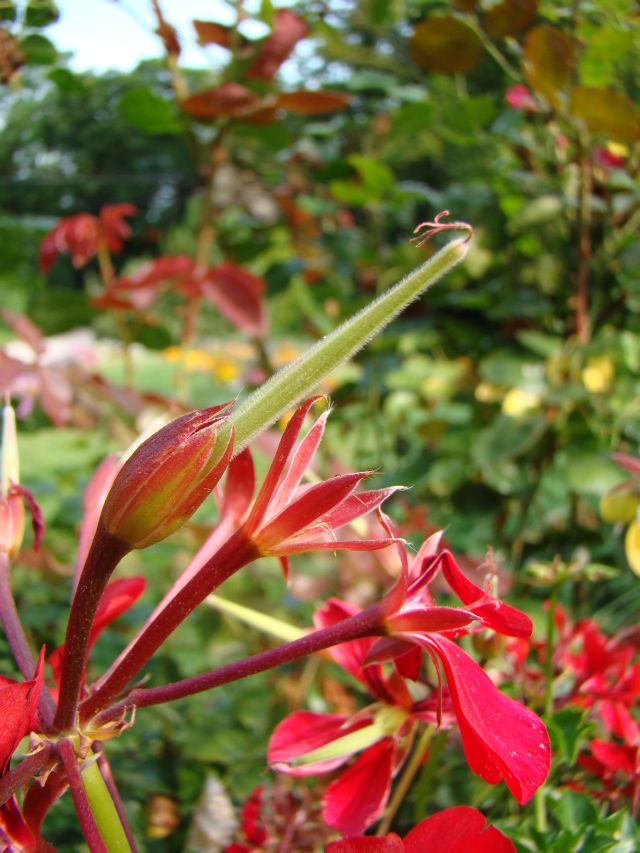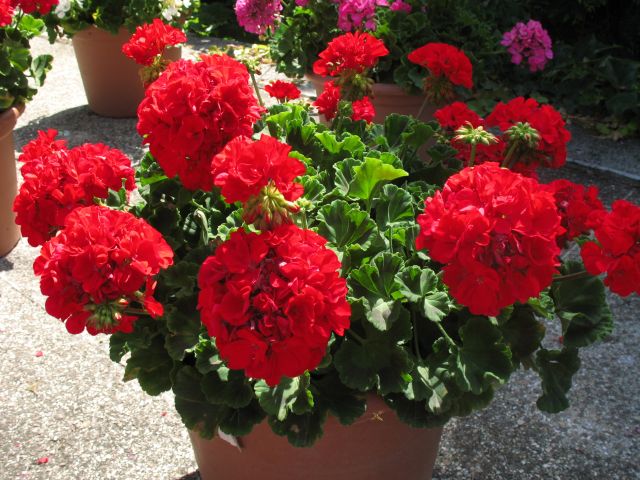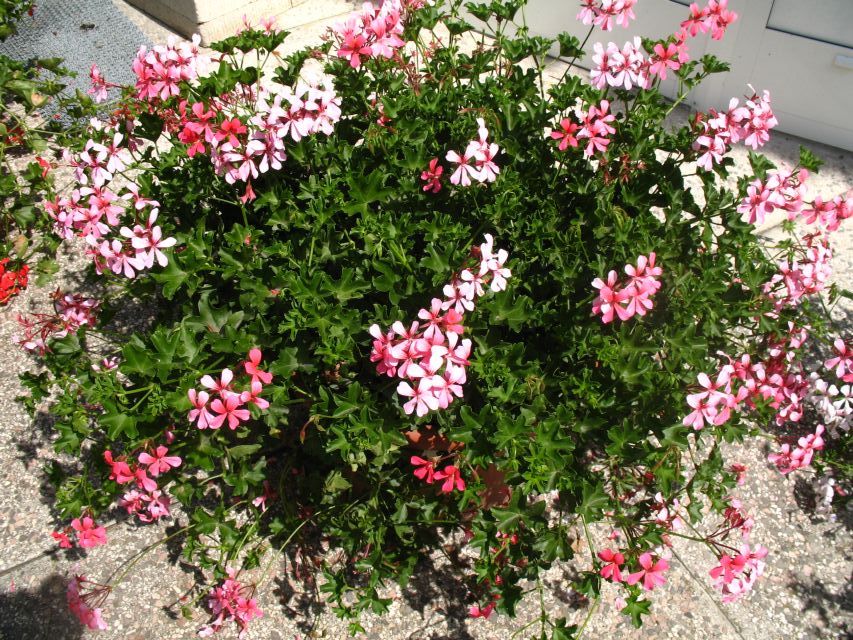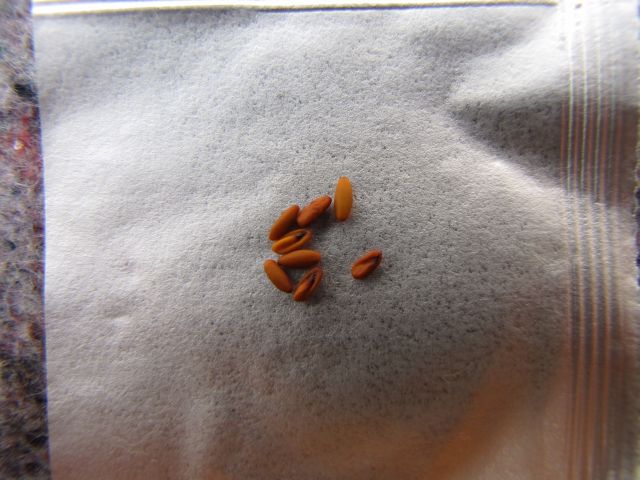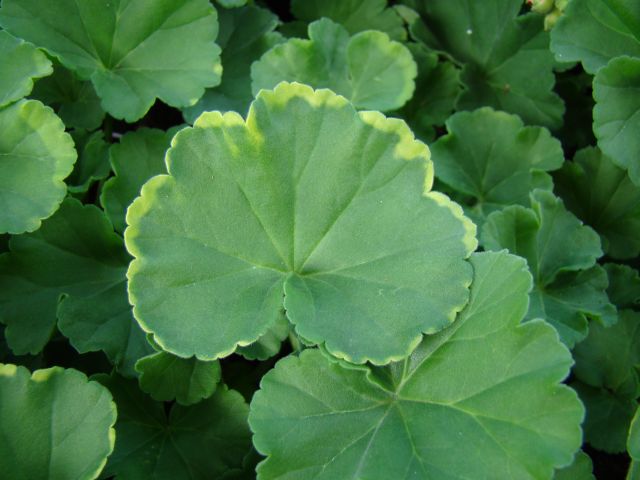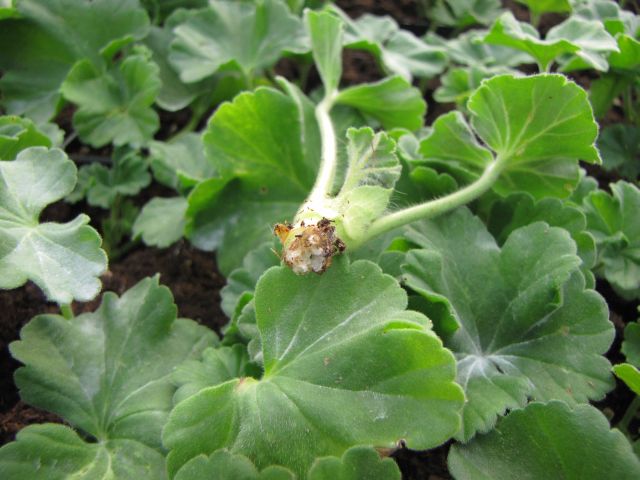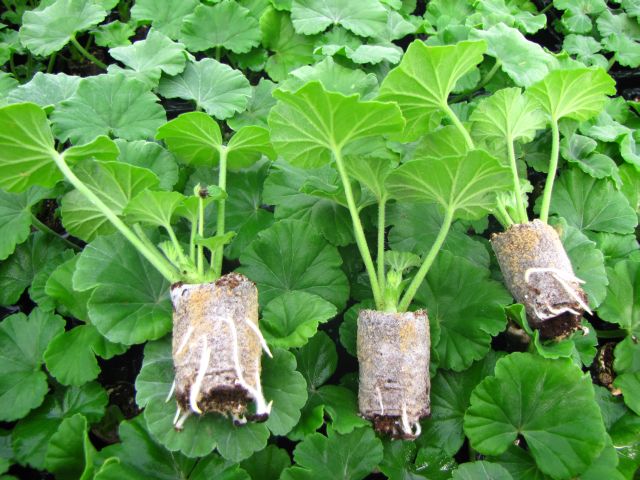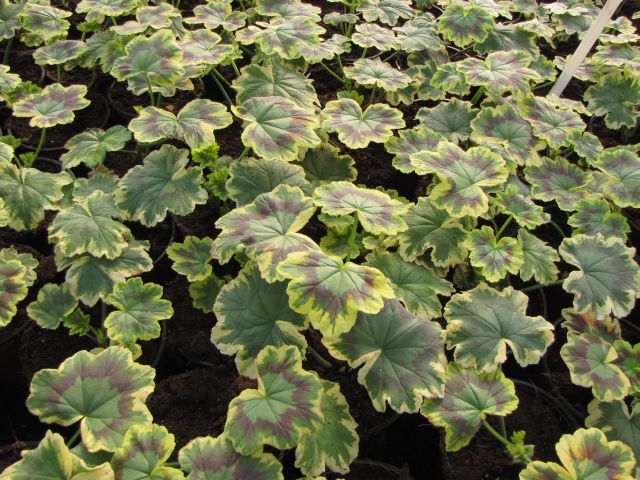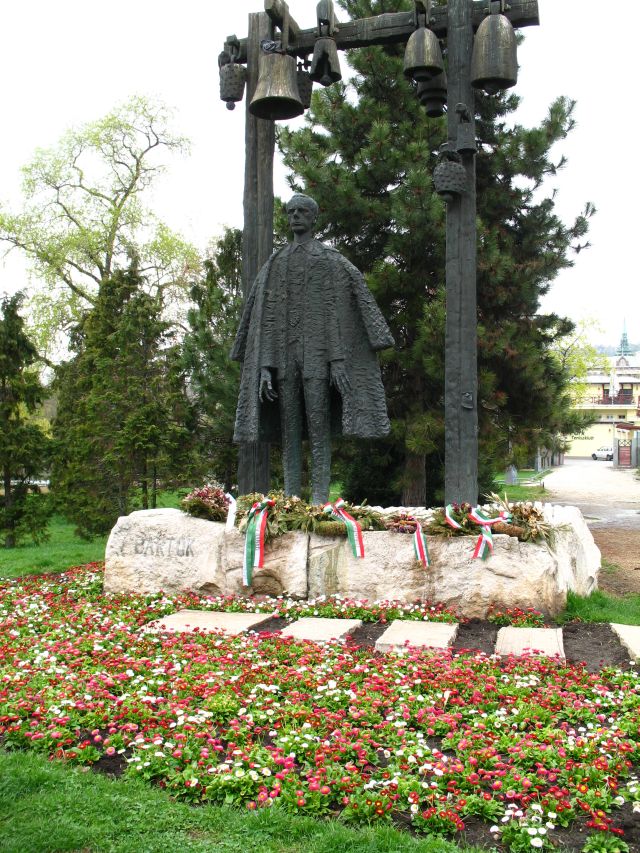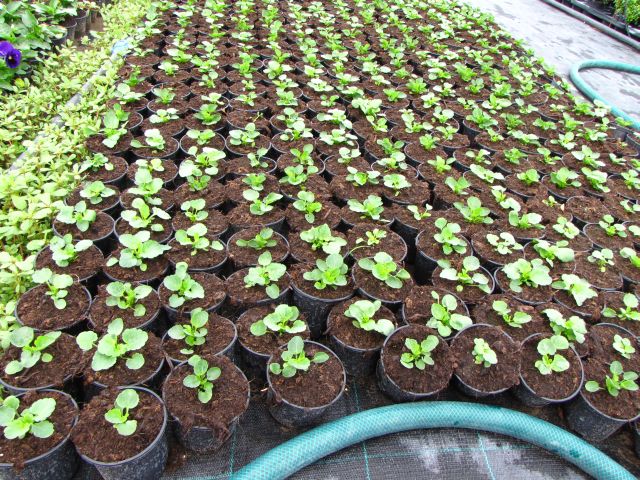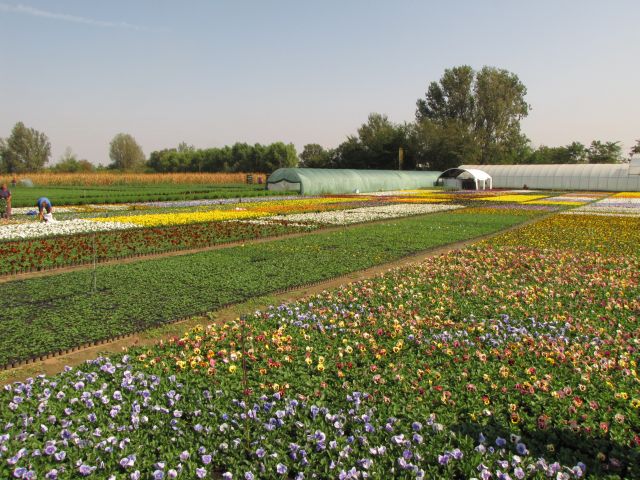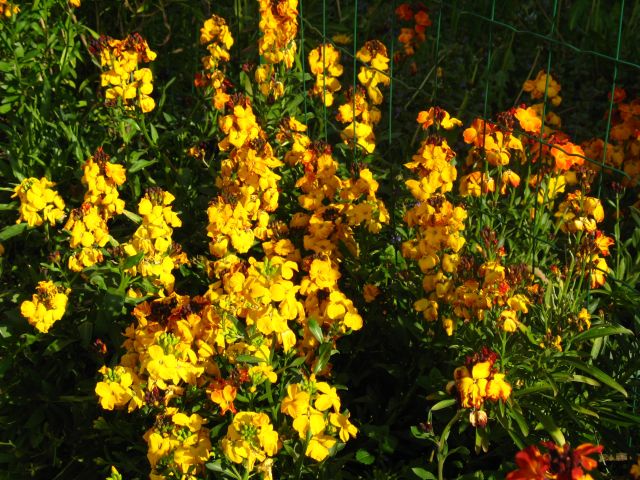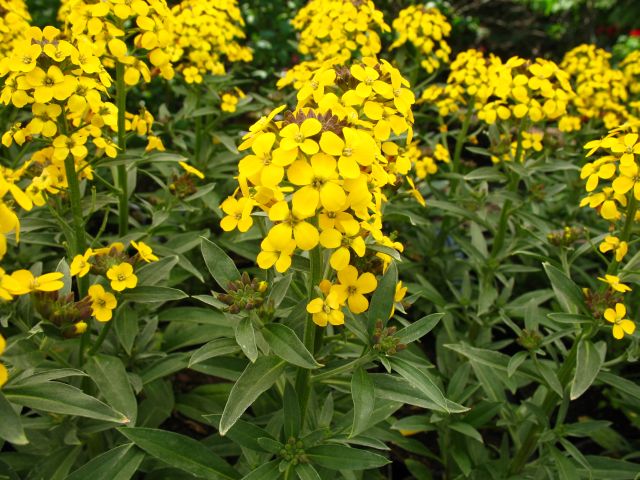6. Cultivation, growth regulation and trade of bedding and balcony plants
Authors: Andrea Tilly-Mándy, Márk Steiner
6.1. Definition of bedding and balcony plants
Those species and varieties are reckoned among bedding and balcony plants, which are planted in public parks or home gardens, in flowerbeds or pots. Characteristically, their primal decorative value is the intensive and various colour, secondly their growth habit. It is required, that they have to bloom in the time of bedding-out.
The bedding and balcony plants are cultivated as annuals and biennials, however botanically they have diverse life-forms.
The most botanically defined annuals have a short flowering after an agile vernal germination and vegetative growing, then they product seeds during the summer. The plants, which bloom in the end of the spring and at the beginning of the summer, wither at latest during July: they are known as ephemeral plants. The other group of annuals has long growing season. They have a long vegetative period after the vernal germination, and then they bloom in the second half of the summer or in the end of it. Their field of use is the home garden, because there is no problem that their decorative value not extends to the whole growing season. They have no significance on public place.
Flower bed
Balcony plants
Centaurea cyanea
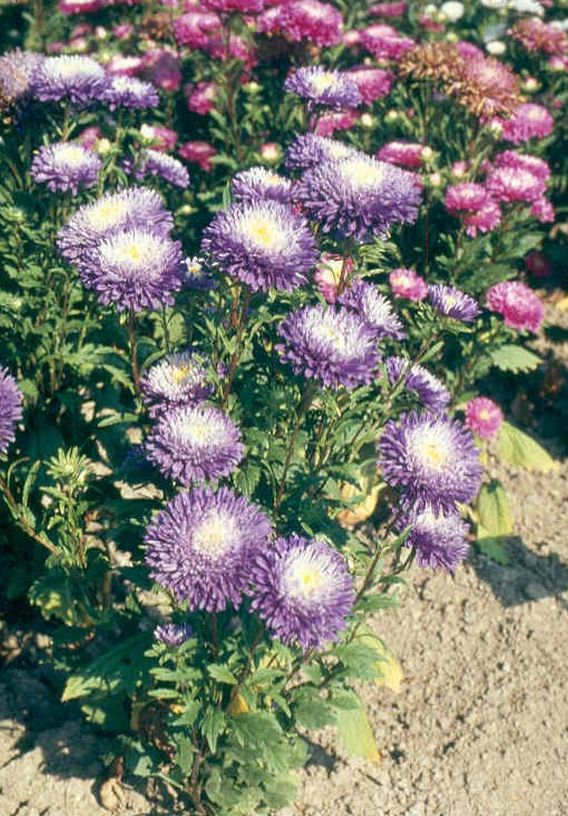
Callistephus chinensis
The most bedding and balcony plants live for a longer time in their original habitats: they are perennials or shrub-sized plants. They are warm-consuming and frost susceptible, the autumn frosts put an end to their life in the temperature zone. So, these plants are reckoned also among annuals technically. They are cultivated in greenhouses or polytunnels in the spring. They are planted into flowerbeds or pots in flower, and they bloom intensively under the whole growing season. In principle, they may be overwintered in a frost-free place, but there are very few species and varieties, which are rewarding to retain to next year, in public place it is not at all possible. That is why the transplant production has to be carried out year by year.
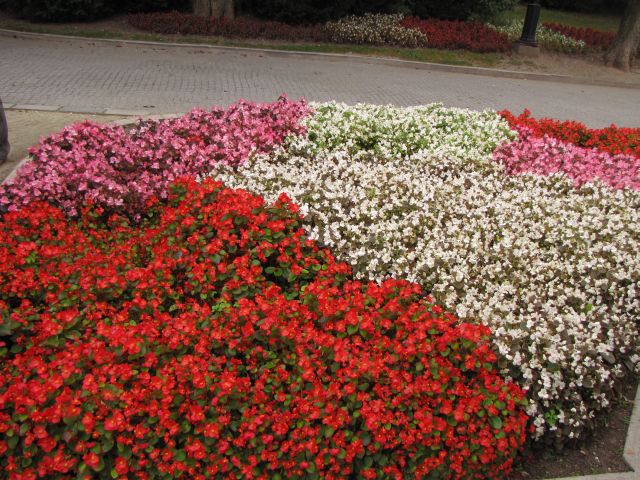
Begonia cucullata
In autumn and spring – due to their frost susceptibility – annuals are not able to decorate the public places; biennials are planted in beddings and balconies. The botanically defined biennials develop in the year of propagation only vegetative organs (rosette), and then in winter they come through a vernalization, therefore in the second year they bloom and crop. This species are called for long-growing-seasonal biennials in the ornamental horticulture. In fact, the short-growing-seasonal biennial ornamentals are cold-tolerant annuals, but their growing cycle is timed so, that the flowering falls on autumn or spring.
Eventually, any kind of little sized plants may be planted into flower-beds and pots (balcony boxes, bins): shrubs, evergreens, perennials. These plant groups are cultivated in traditional ways, which is not subject to this chapter.
6.2. The significance of bedding and balcony plants
The function of the bedding and balcony plants to provide intensive, bright color patches on green surfaces and frontages. Their establishment and maintenance is the most expensive out of the other types of bedding-out. However, their notability does not decrease in contempt of general economic recession, moreover it increases gradually. Nowadays 18-20 million annual and 6-8 million biennial ornamental plants are turned over in Hungary. The rising of total flower-bed surface on public places is greatly facilitated by European Entente Florale Competition, in which Hungary also joined. Additionally, this is the example for the Hungarian national competition (Virágos Magyarországért Mozgalom), which opens the door to rivalry between settlements within the board of the county. Slow changing can be noticed in the choice of species and varieties, but more and more Hungarian weather tolerant cultivars are planted to public places. The decoration of balcony boxes, hanging baskets and pots by balcony plants shows also increasing tendency. The main use of them is in the private-sector: they ornate the frontages of town houses. The Pelargonium peltatum cultivars are unaltered the most significant. In these days, the application of biennials stagnates due to economic reasons. Besides the bending-out in public places the private use is also noticeable, especially in graveyards.
Tagetes patula ’Orion’

Alcea rosea Balaton series
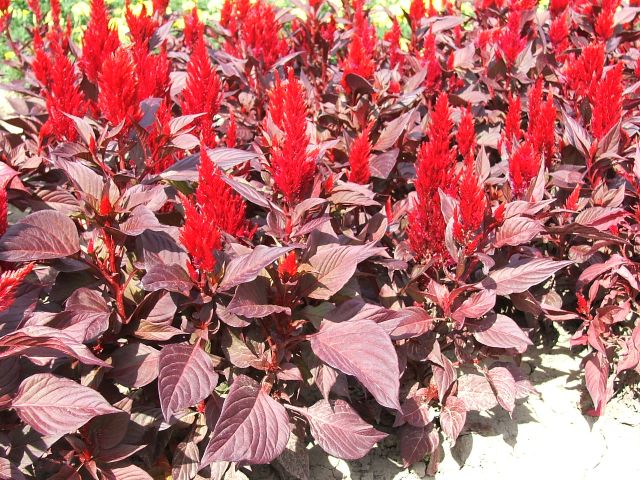
Celosia argentea var. plumosa 'Bikavér'
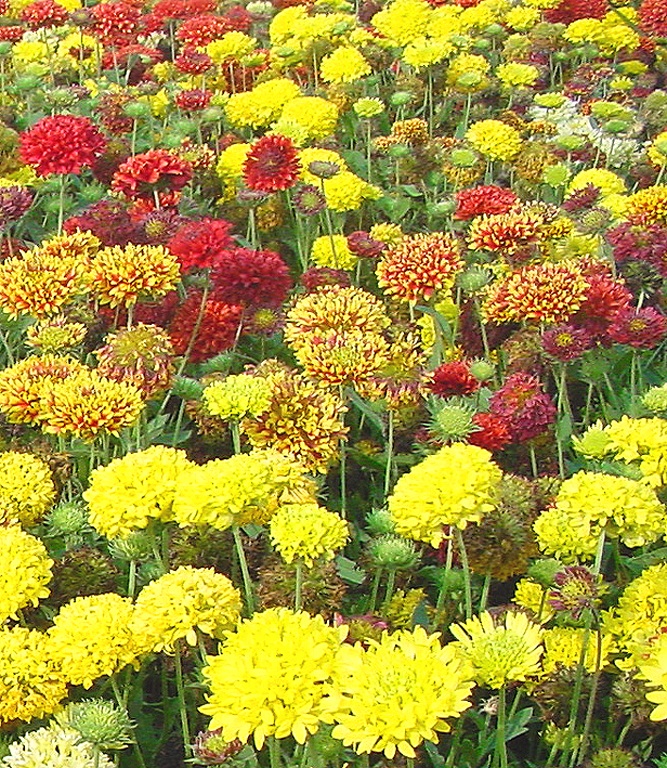
Gaillardia pulchella 'Aranygömb' (yellow), 'Tűzgömb' (red) and 'Perzsaszőnyeg' (yellow and red)
Ocimum basilicum 'Zöldgömb'
Rudbeckia hirta 'Napfény'
Tithonia rotundifolia 'Narancsszőnyeg'
Pelargonium peltatum
The carriage is well tolerated by the propagating materials of bedding and balcony plants. At the same time, they can be transported as finished goods badly, so the cultivation stays next to the markets. It ensures safety for the inland production contrary to imports.
6.3. Propagation of bedding plants from seeds
Most of the annual bedding ornamental plants are propagated by seeding. The botanical species have notability only in house gardens, in public places cultivars are applied alone. A very important criterion of the first class transplant is the powerful, uniform cultivar with heavy flower yield and high decorative value. Since the annuals have to be produced year by year, the conversion to other varieties is very fast due to the intensive breeding programs. The selection is the standard breeding method. Such way produced standard varieties are homozygote in most of their attributes, and they hold them for a few years during the growing. The low prise of seeds is an advantage of this method, but it is not able to protect the breeder from the illegal use of the variety. Dr. Zoltán Kováts Hungarian breeder, who applied this method, became word-famous after he won Fleuroselect gold medals for the varieties of Rudbeckia hirta, Celosia argentea var. plumosa, Tagetes patula and Gaillardia pulchella. His varieties are offered by international seed distributors. The new varieties are produced by heterosis breeding. The heart of the method, that the parental lines, which are produced by inbreeding, are crossed over, and so the first progeny generation (F1) has extremely high and uniform quality, but in second generation (F2) the attributes are segregated, the variety „perishes”. This breeding method needs more know-how and technical background, the preparation is more difficult, the seed price is multiple of the standard ones. It is a great advantage for the breeder that the varieties can not be stolen by the growers, and the breeder’s wage – the licence fee – can be got in completely. Recently, it is expected from a type to have a perfect range of colours as far as possible. Therefore the novelties are named not singly after different colours, but they get a series name with the marking of colours (e.g. Impatiens walleriana JambalayaTM F1 series White, Coral, Pink, Lavender Blue colours).
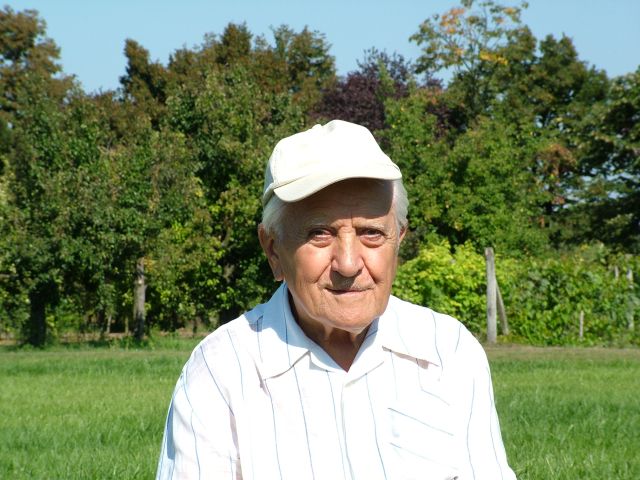
Dr. Zoltán Kováts Hungarian breeder
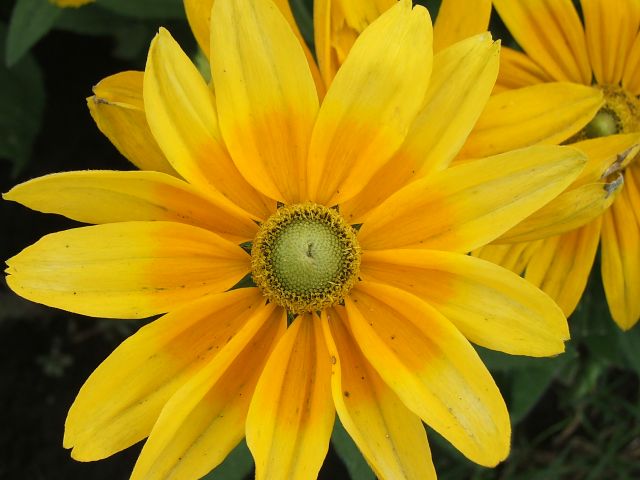
Rudbeckia hirta 'Glória'
Celosia argentea var. plumosa 'Savaria'
Tagetes patula 'Csemő'
Gaillardia pulchella 'Tűzgömb'
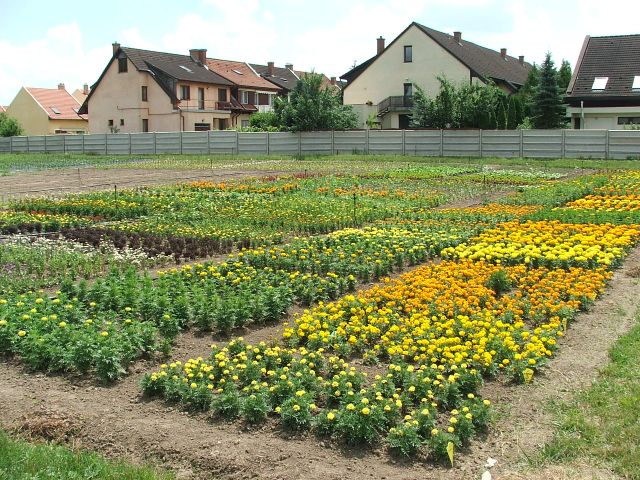
Variety-examination of annual plants
6.3.1. Seed treatment methods
The high volume of transplant production can be economical only with the application of modern technology. Its first step is the use of precision seeder. However, seeds of the species have very different size and structure, therefore their sizes are tended to standardize as far as possible, and so the seeds become able to sow by machine. These methods are the followings:

Seeds of Calendula officinalis
- abrasion: the protrusions of seeds (e.g. wing structures) are worn off for the easier sowing
- pelleting: the seeds are formed to standardized size and globular shape by a rosin sheath
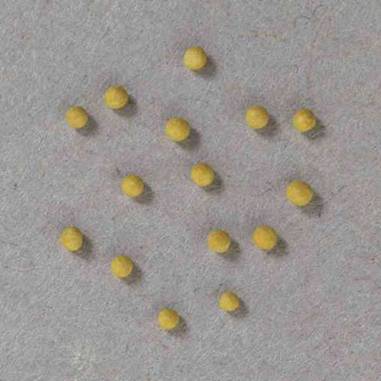
Pelleted seeds
- multiseed pelleting: more seeds are girdled by collective rosin sheath
Portulaca grandiflora seedlings from multiseed pelleting seeds
- seed coating: the rough surface of seeds fills up and the seeds become easy to sow,
- seed dressing: the surface of seeds is treated by pesticides, the resistance of seedlings to some pests can be so increased (so, it is not a treatment to facilitate the sowing). The treated seeds are painted in bright colours to prevent accidents
6.3.2. Transplant production in generative way
The developing time of the different bedding plant species till the first flowers come out is very dissimilar: it takes 3-5 months. Due to the same sales period (from April to June) the starting of transplant production has to be counted down from the probable date of sale. Those species, whose transplants need 5 months for growing, called for long-season species and their seeds have to be sowed early. Begonia cucullata and B. × tuberhybrida are sowed firstly in December, and then it follows e.g. with Lobelia erinus, Verbena bonariensis and some types of ornamental grasses.
Verbena bonariensis
The medium-season species (e.g. Tagetes erecta, T. patula, Celosia argentea, Rudbeckia hirta, Impatiens walleriana, Salvia splendens, etc.) are sowed in February. They have a little bit lower germination temperature (20 °C), than the long-season plants. The very different shaped seeds are treated often toward the standardization of them.
The seeds of short-season species are sowed from late March to early April. On the one hand, these species grow very quickly, on the other hand they need lower temperature for germination (15-18 °C), so they need no transplant production, they may be sowed in open-ground to their eventual place in the flower-bed (sowing in situ). For public place using these species are also transplanted, expecting those species, which have strong taproot.
Ricinus communis 'Fáklya'
In winter on temperate zone (especially on continental climate) it is very expensive to warrant 22 °C and enough lighting for germination and early development. Therefore, less and less grower sow seeds nowadays, they buy rather the seedlings from propagation material distributors. However, the seedlings are more expensive, it is no drop-out (ungerminated seeds, diseases), and the culture may be started 4 weeks later. So, the purchase of seedlings is not a significant extra cost anymore.
6.3.3. Process of seed sowing
The modern technology applies pneumatic precision seeder. The growing media should have fine structure, slightly acidic pH, low content of nutrients, and it should be pathogen-free. It is a white peat-based media, which may be scarified forward by horticultural perlite. The seeds are sowed into cell trays or plug trays; their material is soft PS (polystyrene) plastic. The size of trays is more or less standard, but the number of cells changes.
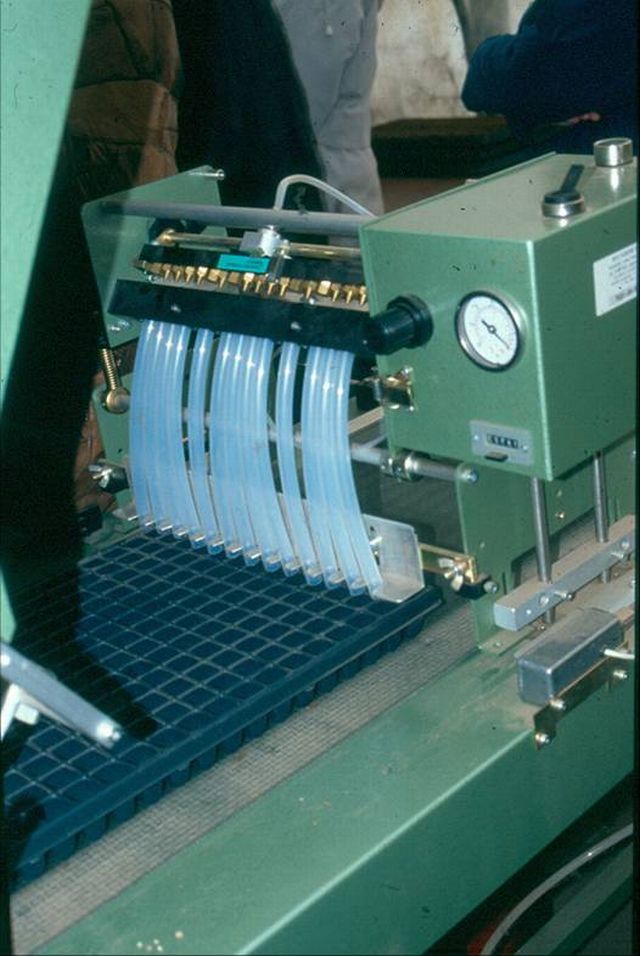
Precision seeder
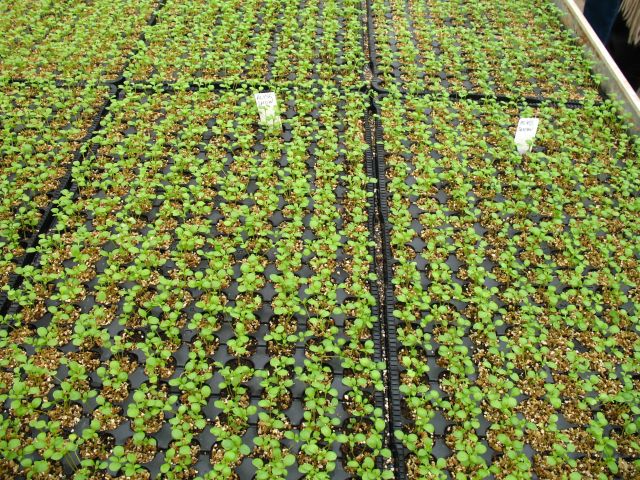
Trays
The more cells are on the tray, the smaller they are. It is depend on the size of seedling, that who large cells have to be applied. For example Begonia cucullata seeds are sowed into 538 or 432 cell trays, while Celosia argentea seeds into 252 cell trays. The carriage of seedlings with full safety may be solved by the application of the more expensive X-trays. These trays are strong, stable, and their legs can be slipped into each other, so they give enough space for the plants. Usually, the seeds are covered in a thin layer by vermiculite.

Begonia cucullata seedlings in trays
X-trays
Seeds covered by vermiculite
The most modern technology of transplants growing is the plug plant production. The seeded trays are put into a germination-room at a temperature of 22 °C and relative humidity of 70- 80 %. After the germination the trays are moved cross a photocell system, which detects the free places, and it stops the gaps with same developed seedlings by robot fingers. So, the growers buy full trays, they do not have to pay for the ungerminated seeds.
Traditionally, the sowing was done by hand into seed flats. A lot of long-season species have small seeds (e.g. Begonia cucullata), therefore sand was added to the seeds for the steady distribution of them. The sowing was covered by glass panes to avoid the shrivelling. Initially, the seedlings are very small, so firstly more of them were pricked out together. Secondly, the seedlings were already pricked out into pots, if they could be separated without damages. Nowadays, this method is already out-of-days, it is not economical.
6.3.4. Process of transplant production
After the germination the seedlings are taken into growing house at temperature of 18-20 °C and high relative humidity. The potting is started after the emergence of the first true leaves. The potting mixture is based on white peat, it is slightly potassium dominant, pathogen-free, and it has fine structure. Large volume of growing medium is necessary for producing great number of transplants. It can be bought by the growers in standardized quality from soil mix producers in packages of 70-80 l, or in bales of 0.5-2 m3. The prise of soil mixtures is rather varying according to the components. Therefore, more growers use the cheaper, unmixed white peat as potting mixture, in which the manufacturer adds nutrients and adjusts the adequate pH. Traditionally, the growers mixed the soil themselves, but it can not be produced at own production in standard quality. However, it is applied by smaller growers in Hungary up to this day. The basic of these home-made soils is also white peat, and compost or some clay component (e.g. alginate) is added to them. The pH may be set by calcium carbonate (e.g. Futor) or dolomite powder to 6-6.5. For nutrient supply mature organic manure may be used, but its quality is variable, therefore all of them have to be examined. As a basal dressing PG Mix, Volldünger or other quick-release fertilizers may be used, and it is rewarding to apply also long-acting (3-4 months) fertilizer in quantity of 2-3 kg·m3. Those potting mixture, which includes the latter fertilizer, may not be stored, because the nutrients may be released by the moisture content of it, and the roots of the plants may be blighted. Very sightly and healthy root system develops, if the growing medium includes superphosphate and gypsum.
Potting substrate
The containers are made of soft plastic in size of 7×7 cm or rarely 9×9 cm. They are filled with growing medium by potting machine, which makes an opening in the midst of the surface for the plug transplants if the planting is done by hand. If the planting is done mechanically, the transplants are set by the potting machine. The deep planting causes often problems if it is done by hand. If a part of the hypocotyl above the root collar is fallen into the soil, infections may get into the stem, because epidermis is thinner on this part. Therefore, the ground surface of plug transplant has to be slightly above the ground surface of containers. The potted plants are placed firstly pot-to-pot on benches or on a polythene film cover at the ground of the growing house. By and by, the foliage of the plants grows over the edge of the containers, and so it is rewarding to take them in larger space. If it is not possible due to limited place or time the smaller size may be realized by application of growth retardants.
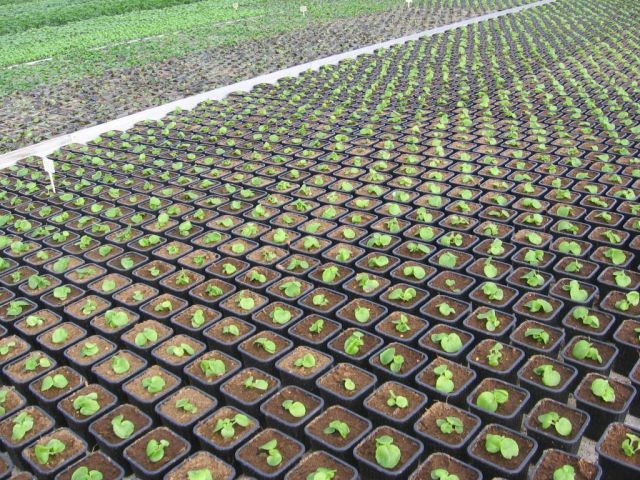
Potted begonia seedlings
Potting machine
Homogenise water supply can be solved by ebb and flood system or irrigation boom. The conventional hand hose irrigation is out of date, however it is already applied.
Irrigation boom
Height control may be necessary during the transplant production. It can be done by the regulation of environmental factors, or by growth retardants. After pricking, if the transplants have already been well rooted, the temperature may be reduced to 14-16 °C, and the irrigation may be moderated, too. The lower temperature slow down the growing, therefore this method may be used if the aim is the sale in May. If the sale will be in April, 16-18 °C have to be held in the whole growing season. Cycocel (CCC) or Alar 85 may be applied as chemical growth retardant. Both compounds are species-specific; their effect is different on some species. Furthermore, the method and the date of application, and the environmental factors influence on their effect, so it is important to know the literature, and to do trial treatments on new species and varieties.
6.4 Propagation of bedding and balcony plants by cuttings
Those species and varieties are propagated in vegetative way by stem cuttings, which
- are not true to variety after generative propagation or
- give no viable seeds.
The vegetative propagation is more expensive, because stock plants have to be maintained and overwintered; they take up much place in the growing house, and so decline the effective growing place. Therefore, this method plays less part in the propagation of bedding plants, while the balcony plants are propagated in vegetative way ubiquitously. Apparently, it takes less time from propagation to sale, which means lower production costs. That is why the most of the growers do not maintain stock plants, but they buy cuttings from propagation material distributors. One of an important aim in the breeding is to make the varieties able to propagate with seeds. The vegetatively propagated varieties may be clones (offspring of an outstanding plant). They will be equipped with variety name (it will be written among two apostrophes) after notification and test of them. Or they may be clonal mixtures (offspring of more similar plants with good characteristics), they are marketed without variety name.
Rooted Petunia cuttings ready to sell
Two groups are differentiated in the view of their ability to be propagated:
- facultative vegetatively propagated species: they can be propagated by seeds and also by cuttings, but for some reason this latter is more favourable
- obligate vegetatively propagated species: they can be propagated only by cuttings.
Facultative vegetatively propagated Ageratum houstonianum
Obligate vegetatively propagated: Iresine lindenii
The varieties are maintained by propagation material distributors, they are usually entrusted by breeder companies. They have farms in the Mediterranean region, South-Europe and Africa (Ethiopia, Costa Rica, Canary Islands, Italy, Spain, etc.): the super elite stock plants are kept here and their growth are vended for propagation material producers or for finished good producers. The propagation material may be rooted or unrooted stem cuttings. The price of them includes the expense of production and transport, and the „wage” of the breeder (licence prise, royalty). The licence prise of the best and most modern varieties is often very high, it may be 25 % of the whole cost.
6.4.1. Stock plant production
It is worth to establish an own stock plant stand, if propagation material is (also) vended. The growers produce first of all geranium stock plants in Hungary. They buy cuttings during the summer. The cuttings are rooted in sterile peat or in the manufactured mixture of peat and perlite, than the rooted cuttings are planted by threes in 20-22 cm large pots. The plants are pinched back more times towards the branching, and the pinched shoots are also rooted. The cuttings have 3-4 leaves (it depends on species). From late November the stock plants are overwintered: the temperature is decreased to 12-14 °C. Due to the cold and the limited light the growing is slow, so the irrigation has to be reduced. From mid-January the temperature and the quantity of irrigation water are increased gradually, and the fertigation is started once a week with nutrient solution of 0.1 %. The cuttings may be collected from the out sprouted shoots.
6.4.2. Finished goods production
The propagation material of the finished goods may originate from own stock plants or bought cuttings. The shoot cuttings used to have 2-4 leaves, while nowadays they are very small, often they have only one full-grown leaf (more cuttings can be so delivered per weight unit). For their survival and adequate rooting the exact regulation of environmental factors is necessary.
Begonia cutting
It has to take care, that the cuttings must not have petiole, stipule, etc. on that part of the shoot, which gets into the soil, because it enhances the risk of rot. In the case of hard-to-root species (Fuchsia, Heliotropium) the application of powdered rooting hormone containing of 0.2-0.4 % naftil acetic acid (NAA) is suggested. Special media are offered by soil mixture distributors for rooting. These are pathogen-free, have fine particle size, but practically no nutrient content, because the plant could not take up them. The basic of the medium is white peat, which may be mixed with perlite or sand. Soft PS plastic cell trays are applied for propagation similar to seed sowing, but cells are larger: one tray has 240 or 104 cells with diameter of 1.5-2 cm. The habit of plant and the size of cuttings determine which size should be used. For the biggest plants 42 cell trays are manufactured: their cells have 6 cm diameter. More and more grower use peat plug for propagation. The heart of the matter, that cells are filled not directly with growing medium. A special machine sticks paper roll (similar to cigarette), which is filled with peat, and this is cut to 3-6 cm peaces by the machine. This peat plugs are taken into the cells and the cuttings are pricked into them. This technology is cheaper, and the cuttings are isolated from each other (preventing the spread of infections).
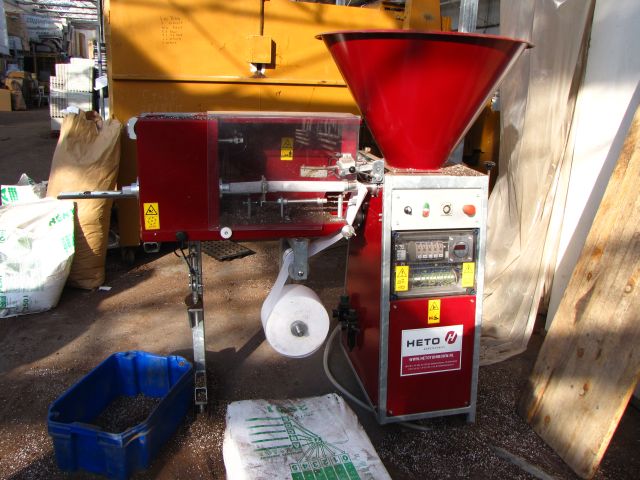
Special machine for peat-roll making
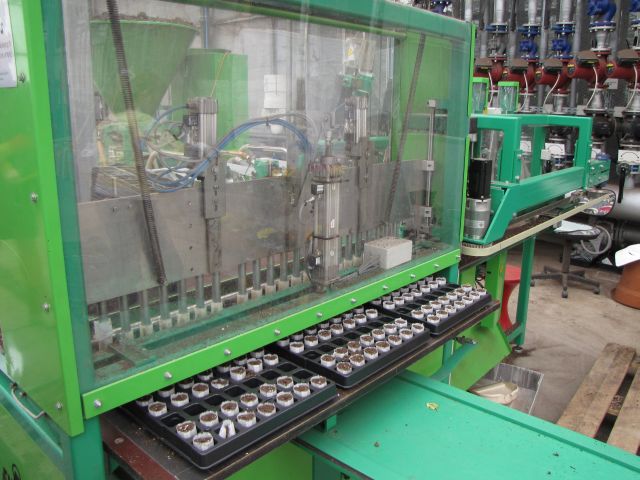
Filling of trays with peat-rolls
The cutting propagation may be done until early April.
For rooting steady bottom heat of 22 °C and air temperature of 20 °C is necessary. On the first week the humidity has to be maintained over 70 %, which may be reduced gradually to 60-65 % after the starting of callus formation. The high humidity is essential, but it may raise the risk of Botrytis cinerea infection, which may avoid with air movement with the use of ventilators. Initially, the cuttings have to be shaded religiously, which may be reduced gradually after the emergence of roots. The rooting time is variable; it takes 1-4 weeks. The propagation material distributors offer for the growers well-rooted cuttings in cell tray or peat plug. However, there is a new marketing method nowadays, when rooted cuttings (usually 10/ packing unit) are offered for general public in 7×7 cm pots. This is the so called cell pack. In this case the plants are more developed, and the presence of a flower or inflorescence at least on one cutting from among the ten is also favourable. It is advantageous, that its growing is short, quick and cheap, and the costumer can buy the plants for a more reasonable prise. But it is disadvantageous, that these plants are vulnerable, and they are often offered by the merchants before the passing of frost danger, which may amount to the dead of the plants.
Table with wire mesh
Packs of Pelargonium cuttings
For the production of flowered and bushy finished goods the rooted cuttings are planted into 9 cm pots, the larger species into 10-12 cm pots. In a hanging basket 3 cuttings are put. The content of the growing medium and the environmental conditions of the growing are the same compared to the pretension of generatively propagated species. When the growing starts up, the branching is subserved by the pinching of shoot tip. In principle, the pinched shoot may be also rooted and raised, but in the case of protected varieties it is illegal. During the cultivation the shoot tips are pinched back 2-3 times, and any type of growth retardant is needed to apply at least once.
Petunia varieties
6.5. Plant protection
At seed sowing and in the early stage of development of young plants damping-off might occur. During the cultivation gray mold and rarely powdery mildew might infect. The downy mildew is a new disease of Impatiens walleriana varieties. Out of pests the piercing and sucking insects (aphids, greenhouse whitefly, leaf mite, spider mite, western flower thrips), and the chewing pest (caterpillars, slugs) might cause problems.
6.6. Trade
The main sale season of annual bedding and balcony plants takes uniformly from mid-April to early June. In the case of early sale the prises are higher then they decrease from mid-May. From mid-June the ware is unsalable. The growers and traders want to extend this short period more and more, therefore the sale is started increasingly earlier – often from mid-March. However, the annuals are frost susceptible, but the frost-free period begins in mid-May (after Ice Saints) in Hungary. Conversely, two sale peaks had evolved: in early spring for general public, who are able to take that few plants to frost-free place, if it is needed. There is a second great wave in mid-May: the annuals are sold for the local governments, when the plant material of public places is bedded out.
6.7. Geranium growing
Geranium is top plant of the ornament of balconies and terraces. It has grate significance in all developed countries. In Hungary 5-6 million pots are turned over per a year, and all of this volume is home-made. Seeing that its quality fails fast during the transport, the production stays next to the market.
The Pelargonium genus has approx 250 species. They originate from the warm, sunny and arid part of South-Africa. They belong toGeraniaceae (Geranium) family. They attributes are the initially fleshy, than woody stem, the succulent, more or less hairy leaves, the zygomorphic flowers in spherical inflorescence and the long, tipped geranium-fruit. More species contain volatile oil (geraniol, citronellol), whereby they have typical scent.
Pelargonium zonale flower types
Fruit of geranium
Their breeding had started in the end of 18th century, and it is continuing uninterrupted nowadays, too. Only few wild species were used as parents. At the moment, Germany is the centre of the breeding, the most important breeding companies are: Fischer, Endisch, Selecta, Dümmen, Elsner. Furthermore, the international Proven Winners, the Israeli Danziger and PanAmerican Seed from the USA are also momentous.
In the cultivation P. zonale (horseshoe geranium), P. peltatum (ivy geranium) and P. grandiflorum (English pelargonium) hybrids are present. For a few years the so called scented-leaf geraniums came out to diversify the range. They ornate mainly not with flowers, but with their various habit and foliage, and they are popular due to their scent. Within this group there are also botanical species (P. graveolens, P. odoratissimum), however there are increasingly more varieties.
Pelargonium zonale hybrids evolved with the utilization of P. zonale and P. inquinans parent species. They attributes are the robust habit, the thick, fleshy and hairy stem, the reniform, crenate, pubescent leaves with stipules and in many varieties the brown zone on leaf blade. They have simple, semi-double and double-flowered varieties. In that latter event all of the stamens and carpels alter to petals. Therefore, double-flowered varieties are able to propagate only by vegetative way. These varieties are famous in Hungary.
Pelargonium zonale ’Fidelity Dark Red’
The first Pelargonium peltatum hybrids evolved with the crossing of P. peltatum and P. lateripes. Their slim, wiry, reptant stem is smooth, the glistening, leathery, mostly smooth and lobed leaves space on it in alternating fashion. Inflorescences and flowers are smaller. In Hungary the simple flowered varieties are preferred; the Ville series (the so called Tyrolean geranium) is the most beloved.
Pelargonium peltatum ’Ville de Paris Rose’
In breeding of Pelargonium grandiflorum hybrids P. grandiflorum, P. cucullatum and P. fulgidum took role. They have erect habit and bigger size. The leaves are bright green, strongly serrated and raspingly pubescent. These hybrids have less, but the biggest flowers among geraniums. Because its breeding started in England, it became known in Europe as English pelargonium. In Hungary it was cultivated for long time as indoor potted ornamental plant, because the warm retarded its flowering. The Aristo series, which can bloom richly throughout the summer also in the continental climate, is the breakthrough of the past few years.
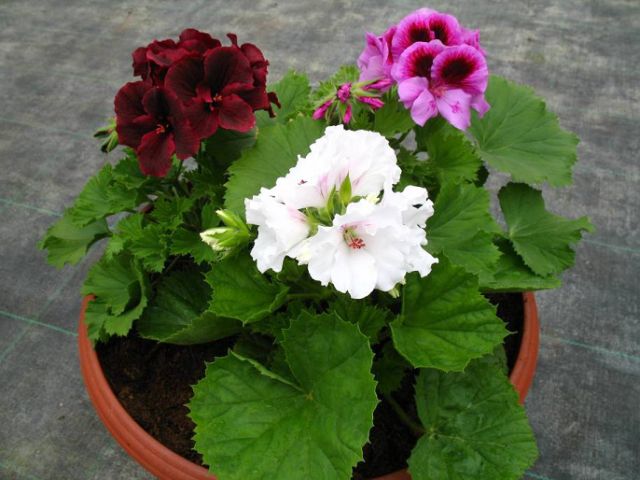
Pelargonium grandiflorum Aristo series
6.7.1. Environmental requirements
Temperature requirement . Geraniums live in their home in frost-free conditions; the temperature is maximum 35 °C in the summer. Conversely, the optimal temperature of these hybrids is 18-25 °C in summer and 12-15 ° C in winter. They endure above freezing temperatures, but their leaves may become red. In the heating season many growers hold 16-18 °C in the day, but in that case the production time increases. The growers, who have own stock plants, may use the so called „fridge” technology: from October-November the rooted cuttings are held on 8-10 °C up to February in dry and bright conditions. The growing is started in February on normal temperature. The English pelargonium needs temperature below 10 °C to blooming likewise in dry condition.
Light requirement . Every geraniums demand light specifically. Their assimilation starts over 1500 lux, and above 5000 lux it increases respectably. Around 25 000 lux intensive shoot growing is observable, it is subservient for cutting picking. Above 50 000 lux the generative growing dominates, the plant blooms. The flowering is not affected by the length of lighting, but mightily by its intensity. In the dark the foliage of geraniums is damaged (turned yellow) within 24 hours, therefore they can not be travelled in truck neither for sort time. It is advantage for the Hungarian growers, because the production stays next to the market, and it is not threatened by import. The cuttings are treated before delivery to avoid deterioration.
Water requirement . Geranium is very sensitive to water supply. Though it needs steady water supply, it does not tolerate waterlogging: root rot may occur. Many growers use wire mesh as tabletop, so the water can drain quickly. Under the rooting of cuttings rather high humidity has to be insured than too moist medium. In winter, when the light is limited, irrigation has to be moderated; the plants have to be kept almost drily. Geranium is sensitive also to too high humidity. In poor light conditions, especially when the temperature is lower, gray mold and oedema (see latter) may occur. Humidity has to be held between 70-80 % under the rooting of cuttings, and it is practical to protect against gray mold infection preventively.
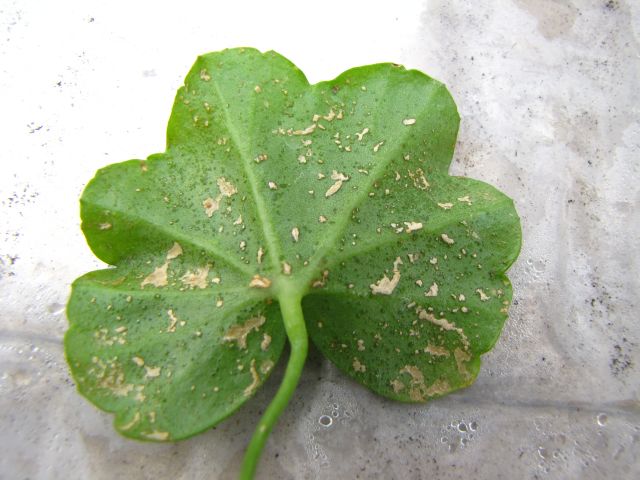
Oedema on geranium
Soil and nutrient requirement . Geranium is not too sensitive to the composition of soil; it grows also in home-made mediums satisfactorily. But the best and standard quality can be produced by the use of special geranium soil mixes. They are based on Baltic white peat, and contain about 30 % clay fraction. The pH is optimal between 5,5-6,5. The start-up level of nutrients: N: 150 mg·l-1, P2O5: 100 mg·l-1, K2O: 200 mg·l -1, MgO: 50 mg·l-1. The total salt content may be 1000 mg·l-1, for fertigation fertilizer of 1-1.5 ‰ may be applied. Traditionally, nitrogen pronounced fertilizer was applied under vegetative development. But then the latest investigations showed, that the use of potassium and phosphorus pronounced fertilizer under the whole production results in thick roots, more compact habit and earlier blooming.
6.7.2. Propagation and cultivation of geranium
Geranium may be propagated vegetatively and generatively, too. Double-flowered varieties do not give seeds; of course they may be propagated only with cuttings. These varieties are famous also in Europe and in Hungary. From the 1960s the breeding of generatively propagated varieties was started due to the global sweep of xanthomonas disease (Xanthomonas campestris pv. pelargonii). In the 1980s they were tried to disseminate in Hungary, but the general public did not take a fancy to the simple flowered varieties. Nowadays, semi-double flowered seedling varieties are also available. Geranium has long growing period if it is propagated by seeds; the sowing has to be started in mid-December. The hard seed coat has to be abraded or applied by chemical way, than it germinates quickly (3-5 days). The germination conditions are equal to long-season bedding plants (see above). Growth retardant (CCC solution of 0.1-0.2 %) has to be applied firstly 2-3 weeks after pricking, and it has to be repeated 3-4 times in 3 weeks periods. The growth retardant affects chlorophyll defect (yellow ring on leaf margin) on some varieties, but the plants can grow out this symptom quickly. The whole production time takes 4.5-5 months.
Geranium seeds
Effect of retardant on the leaf of Pelargonium zonale
The way of vegetative propagation is equal to balcony plants (see above). The propagation material is unrooted stem tip cutting, which is bought by growers from stock plantations of Mediterranean countries (France, Italy, Spain, Portugal, Canary Islands, Israel, Nord-Africa). Cuttings are treated with chemicals on the spot, so that they do not turn yellow under delivery. The cutting size becomes increasingly smaller; nowadays it has mostly only one full-grown leaf. Under delivery temperature is held on 3-4 °C. The isolation (paper roll, Jiffy plug), the bottom heat of 22 °C and relative humidity of 90 % are essential. Cuttings need 15-20 days for rooting, and an additional week for the maturation of thick root system. In the practice in few days after propagation temperature is declined often to 16-18 °C and relative humidity to 70 % due to economical and plant protection reasons. In this case the process is longer. Powdered rooting hormone containing of 0.2-0.4 % auxin may apply, but it may be omitted, too. Rooted cuttings are put in 10-11-12 pots depending on size of variety. Firstly the pots may be placed close to each other then they have to be taken in larger space (20-36 pieces per m2 ). Shoot tip of those varieties, which have low ability to branch, is spouted for better branching. In the case of stronger varieties growth retardant are applied 1-2 times under the growing.
Cutting before rooting
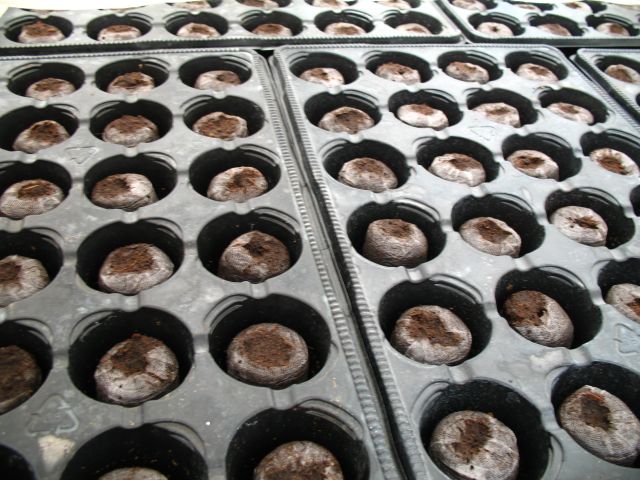
Jiffy peat-rolls
Rooted cuttings of Pelargonium zonale in paper rolls
Growing in pots
6.7.3. Plant protection
Viral diseases. They occur in the stand by propagation material therefore cuttings may be bought only from good source.
Bacterial diseases. The most dangerous is Xanthomonas campestris pv. pelargonii, which causes symptoms both on stem and leaf. Its introduction can be prevented only by observing of hygienic rules and purchase of healthy propagation material.
Fungal diseases. Botrytis cinerea is the most important fungal decease on geranium, which infects often in wet and humid conditions. It may be controlled by ventilation, air moving and use of fungicides. Rust and Pythium stem rot are subsidiary.
Out of pests, greenhouse whitefly and leaf chewing caterpillars may damage. Application of pesticides is necessary against them.
Oedema is a physiological disease. Due to the excessive water supply water-filled giant cells appear on lower surface of leaves. Later they dry out and become corky and rusty spots. It may be prevented by ventilation, moderated irrigation and steady water supply.
6.7.4. Trade
The sales period of geraniums is same to annuals, it is in the spring. Their prises are much higher compared to bedding plants therefore their utilization in public places is not significant. The main part of the produced quantity is bought by general public. P. peltatum is used also by public institutions, restaurants, pleasure-grounds and offices for decoration, but the purchase of general public has likewise bigger notability. The sales period start increasingly earlier, it may be in late March, as well. Others see above by trade of balcony plants!
6.8. Cultivation of biennials on the example of pansy (Viola × wittrockiana)
6.8.1. Definition and significance of biennials
The horticultural importance of biennials is that they can ornate beddings, balconies and pots due to their cold tolerance, when the frost susceptible annuals are not able to do it (freezing): in autumn and spring. The general public buys transplants already in autumn, but out of public places they are planted only in exposed places in autumn, for the most part only in early spring. In Hungary 6-7 million biennials are sold per a year, much part of them is planted into graveyards. There are short- and long-season species. Short-season ones are botanically annuals, but their growing period is shifted. In Hungary 95 % of the applied biennials belong to this group, so the cultivation is presented on the example of them. The long-season species are biennials botanically, too. In the first year they develop vegetative organs, then after jarovization, they bloom in the next year.
Flower bed with Bellis perennis
6.8.2. Growing pansy transplants
Pansy is a short-season biennial ornamental plant propagated by seed. It is an important culture around the world; its breeding is gone on intensively in these days, too. Beyond new color combinations the new varieties have better winter hardiness, heat tolerance and earliness compared to ancestries. F1 hybrid varieties are the most famous, but standard and the so called synthetic hybrid varieties are also circulated. Varieties are grouped according to growing size (low: 15-18 cm, medium: 18-25 cm), blooming date (early: in autumn and early spring, late: in April), flower size (small or multiflora: 2-3 cm, medium: 5-6 cm, big: 6-8 cm, large: 8-10 cm), and purity and combination of colors (clear, blotched, faced, mixed, stripy and banded).
Pansy has big seeds: its weight of one thousand kernels is 3 g. In the case of autumn sale sowing has to be done in summer with the use of sterile soil mixture (June-July) into flat (traditional way) or cell trays by precision seeding (modern way). Pansy needs 18 °C for germination. If the temperature rises above that it becomes halting. In summer it is difficult to provide this low temperature, therefore traditionally the growers take the sowing into cellars or cold premises, or – similar to annuals – they buy in germination-room pre-grown seedlings. The sprouting takes 7-14 days, after that seedlings demand light. By this time they may be set to outdoors under shade house with regular misting. Potting may be done after the emergence of true leaves into 7×7 cm or (if it is required) 9×9 cm square pots. Towards the satisfactory root development phosphorus demand of plant has to be provided. Pansy is salt-sensitive, it may be irrigated with nutrient solution of low (0.1-0.15 %) concentration. It is sensitive also to waterlogging: the ground has to be made even in open field. The first flowers come out in mid-September. The autumn sale starts in this time and takes to late October.
Pansies in pots
Pansy transplants before sale (in Autumn)
In the case of spring sale the sowing may be done later (till late October). Temperature of 18 °C can be provided in greenhouse by heating. Seedlings may elongate in poor light conditions, therefore after planting application of Alar 85 growth retardant in 3g·l-1 concentration is advisable on two occasions. The full-grown transplants are overwintered on low temperature then they are forced in early March before bedding. They are bedded out to public places in spring, because they are intolerant of trampling (they are out of sight under the blanket of snow) and salt. It is practical to plant them in autumn only in raised beddings or farer from the traffic. Those transplants, which were not able to sold in autumn, may be also overwintered, and tried to sell again in spring.
Recently, the little flowered and bushy so called cornuta type pansy spreads more and more. This group regenerates better after environmental damages. However, it has small flowers, they turn out in force therefore this type is better to public places compared to those hybrids, which have big or rather large flowers. The greater flowers has a pansy, Hungarian people still likes the better. The aim is the reshaping of community standards. Within this group came out the trailing pansies with small flowers, they can be planted into hanging baskets, too.
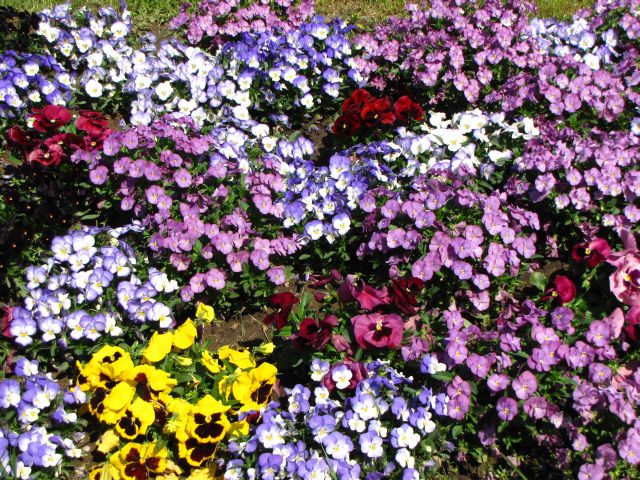
Cornuta pansies
6.8.3. Plant propagation
Pythium, downy mildew, powdery mildew and fungi that cause leaf spot may occur during the cultivation. The chemical control is possible against them. Out of pests, leaf chewing caterpillars and aphids may damage.
6.8.4. Other species
Lately, the unexciting bedding-outs are tried to vary fortunately by other species. Blue, white and pink varieties of Myosotis sylvatica (forget-me-not), simple and double-flowered varieties of Bellis perennis (English daisy) and the Erysimum cheirii and Erysimum × allionii with different yellow tinges have occurred.
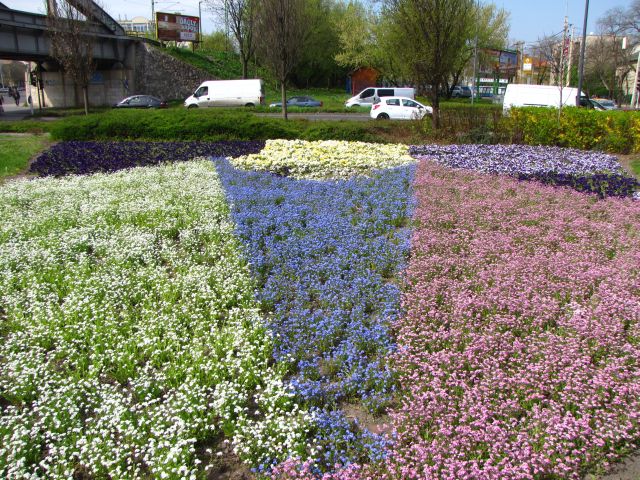
Flower bed with forget-me-not (Myosotis)
Erysimum cheirii
Erysimum x allionii

